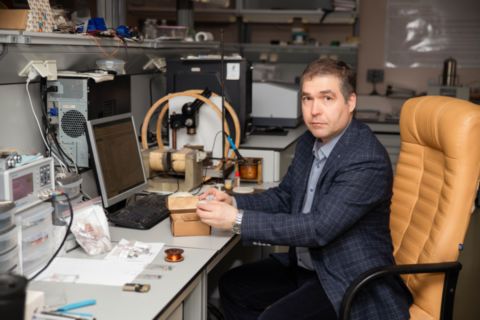Scientists from South Ural State University have patented a computer program that allows for highly accurate prediction of the physical and mechanical characteristics of aluminium alloy castings. This development was created as part of the research conducted by SUSU specialists jointly with regional enterprises.
In mechanical engineering, the most common method for producing parts of complex configuration is liquid metal casting (the share of castings in machine tool and engine building reaches 70%-80%). Casting allows to reduce the time and cost of manufacturing products of the most complex shape, but has certain difficulties.
"Each product is unique, it is impossible to obtain the same cast structure several times in a row," explains Ivan Erdakov, Deputy Director of the SUSU Institute of Engineering and Technology. "The specific feature of casting processes is their clearly expressed stochastic (probabilistic) nature. This is explained by the fact that out of several hundred factors affecting the value of a particular parameter, several dozen can be recorded, while the rest create a "noise background" and "smear" the value of the parameter. Inevitably, there is a fluctuation in temperature, speed, pouring time, and most importantly, the composition of the poured metal varies. All this affects the crystallization of the alloy, causing the formation of microporosity and microcracks and, as a result, leads to a decrease in the performance characteristics of finished products."
To take this feature into account, scientists have developed a special program that allows modelling the key stage of manufacturing cast parts even before the launch of real production. The computer model takes into account all possible deviations and accidents, as well as the processes occurring inside the aluminium blank from the moment of pouring the liquid alloy until its solidification: the rate of nucleation of alloy crystallization centres, the proportions of the phases formed, grain sizes, micropore sizes and other parameters influencing the strength, wear resistance and durability of the final product.
"Our program simulates namely this complicated process: alloy crystallization, " comments Ivan Erdakov. "Thanks to it, engineers can see in advance what the structure of the part will be and what properties it will have. This means that they will be able to identify potential problems even before the actual production cycle begins and take measures to prevent defects."
Simulation modelling allows predicting the quality of castings not only by basic parameters, such as hardness, tensile strength and relative elongation, but also to "play" the real course of the structure formation process at the micro-, meso- and macro-level with maximum accuracy. Implementation of the program in real production will reduce the costs of new developments, improve their quality and speed up their entry into the market. The proposed software in combination with multi-purpose engineering analysis systems will allow engineers to completely reproduce the production process in virtual space, checking its stability and efficiency.
The patented technology is especially in demand in the production of complex shaped castings used in the automotive, aviation and shipbuilding industries. According to the authors of the project, the effectiveness of the developed algorithm was verified by analyzing the results of more than 30 laboratory tests and a number of industrial samples manufactured at existing production sites of Russian plants.




